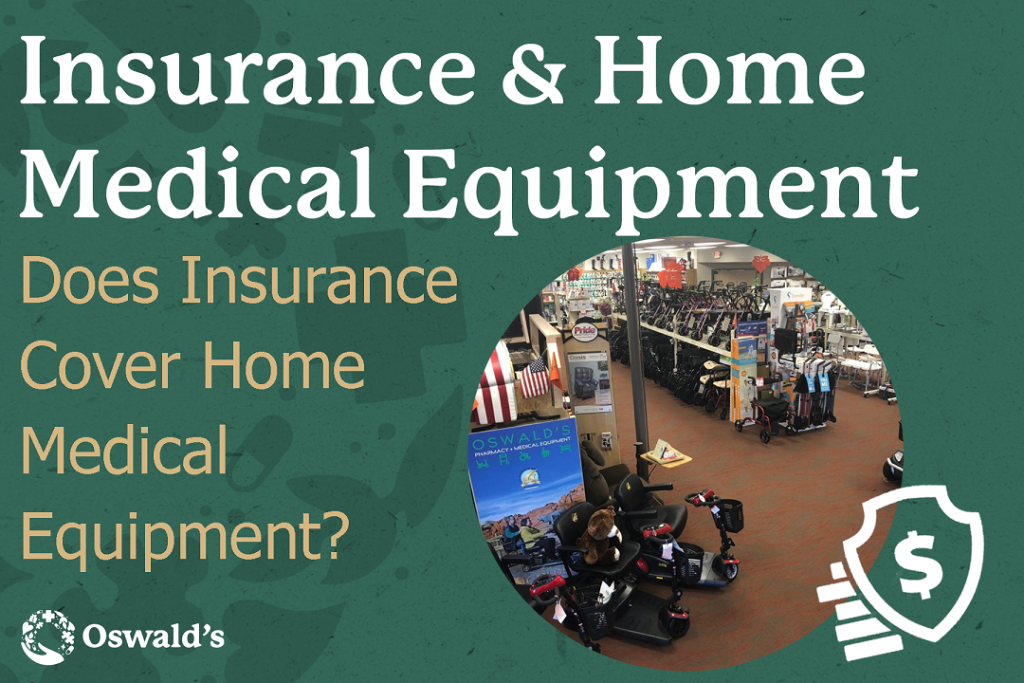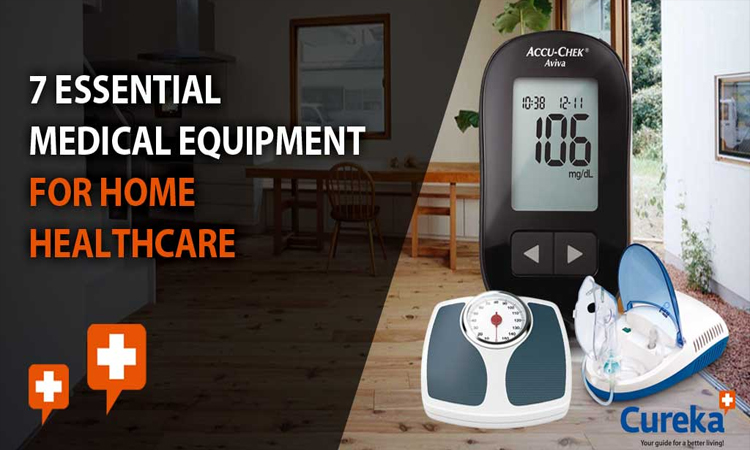Insurance-Approved Home Medical Equipment for Chronic Illness
Exploring the world of Insurance-Approved Home Medical Equipment for Chronic Illness opens up a realm of possibilities for individuals managing long-term health conditions. From the importance of insurance approval to the impact on accessibility, this topic delves into crucial aspects that affect many lives.
Delving deeper, we uncover the various types of chronic illnesses that often necessitate specialized home medical equipment, shedding light on the intricate relationship between insurance coverage and quality of life.
Introduction to Insurance-Approved Home Medical Equipment for Chronic Illness

Managing chronic illnesses often requires the use of specialized medical equipment at home. These devices play a crucial role in monitoring and treating various conditions, improving the quality of life for patients. However, the cost of such equipment can be a significant burden for many individuals.
Significance of Insurance-Approved Equipment
Insurance approval for home medical equipment is essential as it helps alleviate the financial strain on patients. By covering all or part of the cost, insurance policies make these devices more accessible to those in need. This approval ensures that individuals can receive the necessary equipment without facing exorbitant expenses.
Impact on Accessibility
Insurance approval greatly impacts the accessibility of home medical equipment for chronic illness management. Without insurance coverage, many patients would struggle to afford the devices they require to effectively monitor and manage their conditions. Approval by insurance companies makes it easier for individuals to access these vital tools.
Types of Chronic Illnesses Requiring Home Medical Equipment
- Diabetes: Patients with diabetes often need glucose monitors, insulin pumps, and other devices to manage their blood sugar levels.
- Respiratory Conditions: Individuals with conditions like COPD may require oxygen tanks, nebulizers, or CPAP machines for breathing support.
- Heart Disease: Those with heart conditions may need blood pressure monitors, heart rate monitors, or even defibrillators at home.
- Mobility Issues: Patients with mobility issues may require wheelchairs, walkers, or mobility scooters to assist with daily activities.
Types of Insurance-Approved Home Medical Equipment
When it comes to insurance-approved home medical equipment for chronic illness, there are several common types that are typically covered by insurance companies. These devices are essential for managing and improving the quality of life for individuals with chronic conditions.
Let’s explore some of the most prevalent types of home medical equipment approved by insurance providers.
Common Types of Home Medical Equipment
- Wheelchairs: Manual or electric wheelchairs are often covered by insurance for individuals with mobility issues.
- CPAP Machines: Continuous Positive Airway Pressure (CPAP) machines are commonly prescribed for individuals with sleep apnea.
- Oxygen Equipment: Portable oxygen concentrators or tanks may be covered for individuals with respiratory conditions.
- Walkers and Canes: These assistive devices help individuals with stability and mobility issues.
Comparison of Insurance Coverage
- Medicare: Medicare typically covers a wide range of durable medical equipment, including wheelchairs, walkers, and hospital beds.
- Medicaid: Coverage varies by state, but Medicaid often covers essential medical equipment for low-income individuals.
- Private Insurance: Coverage varies widely depending on the insurance plan, so it’s essential to check with your provider for specific details.
Process of Getting Medical Equipment Approved
It is crucial to follow these steps to ensure your medical equipment is approved by insurance:
- Obtain a prescription from your healthcare provider specifying the type of equipment needed.
- Contact your insurance company to verify coverage and obtain any necessary forms or documentation.
- Submit the prescription and any required paperwork to your insurance provider for approval.
- Wait for approval and confirmation of coverage before obtaining the medical equipment.
Benefits of Insurance-Approved Home Medical Equipment

Having insurance-approved home medical equipment for chronic illness management comes with a variety of advantages. Not only does it provide financial relief, but it also enhances the quality of life for individuals dealing with long-term health conditions.
Financial Relief
- Insurance coverage for medical devices can significantly reduce out-of-pocket expenses for individuals with chronic illnesses. This means that essential equipment such as wheelchairs, oxygen concentrators, or diabetic supplies are more accessible and affordable.
- By having insurance-approved home medical equipment, individuals can avoid the high costs associated with purchasing or renting these devices independently. This can alleviate financial burdens and allow patients to focus on managing their health without worrying about the expenses.
Improved Quality of Life
- Insurance approval for medical equipment ensures that individuals have access to the necessary tools and resources to manage their chronic conditions effectively. This can lead to better health outcomes and an overall improved quality of life.
- With insurance coverage, individuals can receive timely replacements or upgrades for their medical devices, ensuring that they are always equipped with the latest technology to support their health needs. This can enhance comfort, convenience, and independence for those living with chronic illnesses.
Challenges in Obtaining Insurance-Approved Home Medical Equipment
When it comes to acquiring insurance-approved home medical equipment for chronic illness, individuals often face various obstacles that can complicate the process. These challenges can lead to delays or even denials in the approval of necessary medical devices, impacting the quality of care and treatment for those in need.
Common Obstacles in Obtaining Approval
- Lack of Documentation: One of the most common reasons for denial is insufficient or inaccurate documentation provided to the insurance company. Missing medical records, prescriptions, or physician notes can hinder the approval process.
- Insurance Restrictions: Some insurance policies may have specific guidelines or limitations on the types of medical equipment covered, which can result in denials for certain devices deemed as not essential or outside the coverage scope.
- Prior Authorization Requirements: Certain medical devices may require prior authorization from the insurance company, adding an extra layer of complexity to the approval process and potentially causing delays in obtaining the necessary equipment.
Impacts of Delays or Denials
- Delayed Treatment: Rejections or delays in approval can lead to postponed or interrupted treatment plans, impacting the overall management of chronic conditions and potentially worsening health outcomes.
- Financial Burden: Without insurance approval, individuals may be forced to bear the full cost of expensive medical equipment, placing a significant financial burden on them and their families.
- Emotional Stress: The uncertainty and frustration of facing denials or delays in obtaining essential medical devices can take a toll on the mental and emotional well-being of individuals already dealing with chronic illnesses.
Tips for Navigating Challenges
- Stay Organized: Keep all medical records, prescriptions, and documentation in order to ensure that you have the necessary paperwork when submitting requests for insurance approval.
- Review Insurance Policy: Familiarize yourself with your insurance policy to understand the coverage limitations and requirements for medical equipment, allowing you to anticipate any potential issues during the approval process.
- Seek Assistance: Don’t hesitate to reach out to your healthcare provider, insurance company, or a patient advocacy group for guidance and support in navigating the challenges of obtaining insurance-approved home medical equipment.
Closing Notes

In conclusion, the journey through the realm of Insurance-Approved Home Medical Equipment for Chronic Illness reveals the complexities and nuances of managing chronic conditions with the support of insurance coverage. From benefits to challenges, this discussion showcases the pivotal role that insurance approval plays in enhancing the well-being of individuals facing long-term health struggles.
Query Resolution
What types of chronic illnesses commonly require home medical equipment?
Conditions like diabetes, COPD, heart failure, and arthritis often necessitate specialized home medical equipment for daily management.
How does insurance approval impact accessibility to necessary medical devices?
Insurance approval can significantly increase accessibility by covering or subsidizing the cost of essential medical equipment, making it more affordable for individuals.
What are common challenges faced in obtaining insurance-approved home medical equipment?
Delays in approval, denials based on coverage limitations, and navigating complex insurance policies are among the challenges individuals may encounter.